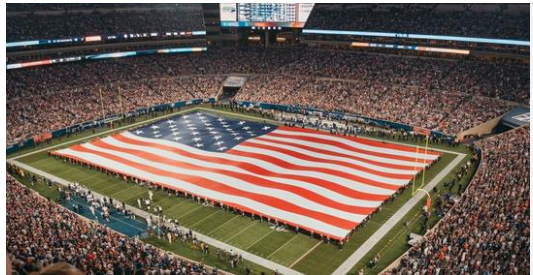The familiar strains of “The Star-Spangled Banner” have become an integral part of the American sports experience. But have you ever stopped to think about why this tradition began? The answer takes us back to the somber days of World War I, when the anthem became a powerful reminder of national pride and resilience.

A pivotal moment in this tradition occurred on September 5, 1918, during Game 1 of the World Series between the Boston Red Sox and the Chicago Cubs. As the U.S. Navy band played the national anthem during the seventh-inning stretch, Red Sox infielder Fred Thomas, who was in the Navy, turned toward the American flag and saluted. This gesture sparked a chain reaction among other players, and as the song came to a close, the stadium erupted into thunderous applause.

From that moment on, the anthem began to feature prominently in future games. By the time it became official in 1931, the NFL had already mandated its playing at every football game, a practice that soon extended to most major sports. The evolution of sound systems during World War II played a crucial role in the anthem’s omnipresence, making it “heard everywhere.”

Today, the tradition of playing the national anthem at sporting events remains a topic of debate. Some view it as a tribute to fallen heroes, while others argue it represents the broader American experience. In recent years, the conversation has intensified, with some arguing that the anthem has become a divisive symbol. Others believe it is an essential part of American sports culture.

As we consider the role of the national anthem in sporting events, it’s essential to acknowledge the complexities of this tradition. Ultimately, the meaning of “The Star-Spangled Banner” varies from person to person, shaped by individual experiences and beliefs. As we move forward, it’s crucial to engage in respectful and open-minded discussions about the significance of this tradition.


